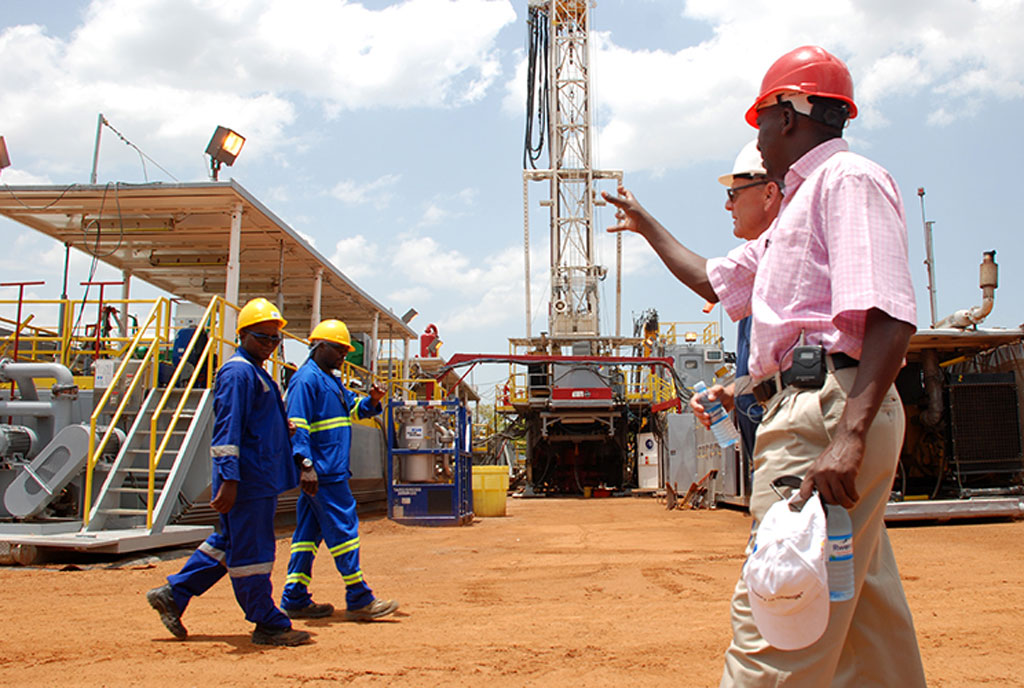Prime
CNOOC’s FID announcement is big boost to trade - China

CNOOC has already indicated its willingness to invest in to invest in both upstream and in the East African Crude Oil Pipeline. PHOTO/FILE
What you need to know:
- Energy Minister Ruth Nankabirwa announced early this month that CNOOC had written to government confirming it commitment to invest in both upstream and in the East African Crude Oil Pipeline.
China has described the recent Final Investment Decision announced by state-owned oil giant, China National Offshore Oil Corporation (CNOOC) as “another big boost” in Uganda-China trade.
CNOOC, the third largest Chinese oil company, early this month confirmed its investment plan in both upstream - Kingfisher oil project in Hoima and Kikuube districts and midstream – 8 percent equity stake in the proposed East African Crude Oil Pipeline.
Speaking yesterday at a briefing on the upcoming eighth Forum on China-Africa Cooperation ministerial summit due next Wednesday and Thursday in Dakar Senegal, Chinese Ambassador Zhang Lizhong said CNOOC’s decision to invest in Uganda’s oil will spur economic development and trade.
“By the end of 2020, the stock of non-financial direct investment in Uganda had reached $1.07b (Shs3.7 trillion),” Amb Zhang said, noting: “A number of industrial parks in Uganda invested and built by Chinese enterprises have become highlights of economic and trade cooperation between our two countries.”
CNOOC, alongside French oil giant - now TotalEnergies - ventured into Uganda in 2012 after acquiring a stake from struggling Anglo-Irish Tullow Oil, which has since wound up operations in Uganda.
TotalEnergies holds majority stake in the upstream with 66.66 percent compared to CNOOC’s 33.33 percent.
Energy Minister Ruth Nankabirwa announced early this month that CNOOC had written to government confirming it commitment to invest in both upstream and in the East African Crude Oil Pipeline.
The 1,443-kilometre pipeline will transport Uganda’s oil from Hoima to the Chongoleani terminal in Tanga at the Indian Ocean coast in Tanzania, where it will be loaded into tankers en-route to the international market.
Both CNOOC and TotalEnergies will have to invest at least $10b in the required infrastructure to start commercial production by earliest 2025.
Chinese Foreign Direct Investments in Africa across all sectors, Amb Lizhong said yesterday, had clocked $2.59b (Shs9.1 trillion,) representing an increase of 9.9 percent year-on-year, which outpaced China’s overall outbound direct investment by 3 percent and exceeded the pre-pandemic level in 2019.
Amb Lizhong urged Uganda to take advantage of the China’s duty free quota free market access scheme - first effected in July 2010 and renewed in January 2015 - which covers 97 per cent of all tariff lines to expand its exports.
“We encourage Uganda to take an active part in the China International Import Expo, the China-Africa Economic and Trade Expo and other Expos activities so as to promote Ugandan’s products, said.
The Forum on China-Africa Cooperation was established in 2000 as a diplomatic charm offensive for “friendly” African countries. The platform’s summits are held interchangeably in China and Africa.
As such, Amb Lizhong said the last 21 years have yielded, among others, trade between China and Africa and China’s investment in Africa have expanded 20-fold and 100-fold, respectively.
China has also built more than 10,000 kilometers of railway lines, nearly 10,000 kilometers of roads, 120,000 megawatt of power-generating capacity, 150 kilometers of backbone network across Africa.
China investments in africa
The Forum on China-Africa Cooperation was established in 2000 as a diplomatic charm offensive for “friendly” African countries. The platform’s summits are held interchangeably in China and Africa.
As such, Amb Lizhong said the last 21 years have yielded, among others, trade between China and Africa and China’s investment in Africa have expanded 20-fold and 100-fold, respectively.
China has also built more than 10,000 kilometers of railway lines, nearly 10,000 kilometers of roads, 120,000 megawatt of power-generating capacity, 150 kilometers of backbone network across Africa.




